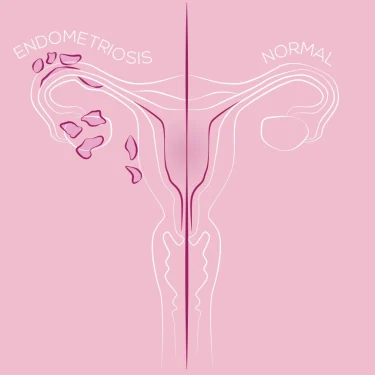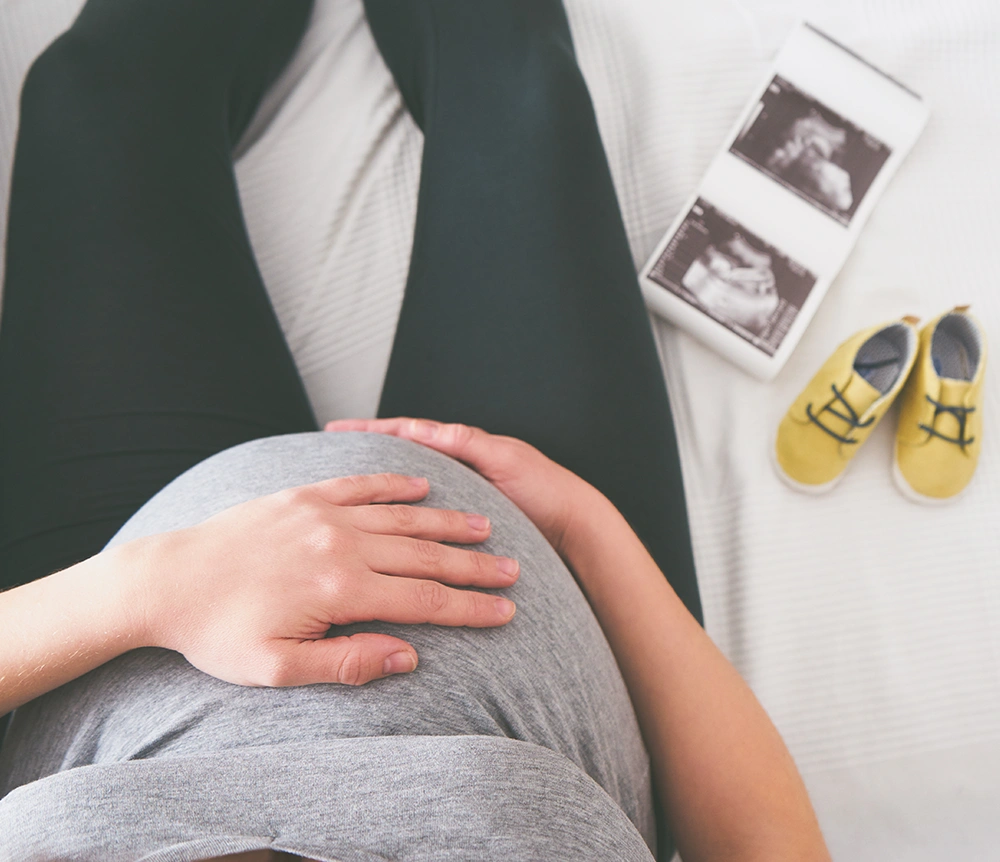What is Endometriosis?
Endometriosis is a chronic condition in which tissue similar to the lining inside the uterus (called the endometrium) grows outside of it. This tissue can develop on the ovaries, fallopian tubes, the outer surface of the uterus, and other organs in the pelvic region. Each month, this tissue behaves like the endometrial lining—thickening, breaking down, and bleeding. However, unlike the lining inside the uterus, this blood has nowhere to go, causing irritation, inflammation, and scar tissue formation. Over time, endometriosis can lead to chronic pelvic pain, heavy periods, painful intercourse, and fertility problems.
How Endometriosis Affects Fertility
Endometriosis is one of the leading causes of infertility in women. The presence of endometrial-like tissue outside the uterus can cause scarring and adhesions, blocking fallopian tubes, or distorting the structure of the reproductive organs. Additionally, the inflammation and pain caused by the condition can affect ovulation, fertilization, and embryo implantation, making it more difficult for women to conceive naturally. Studies show that approximately 30-40% of women with endometriosis experience difficulty getting pregnant.

Treatment Options for Endometriosis
While there is no cure for endometriosis, several treatment options can help manage symptoms and improve fertility outcomes:
Medications
Pain relief is often achieved with NSAIDs (e.g., ibuprofen) or hormonal therapies that suppress ovulation and slow the growth of endometrial tissue.
Surgical Treatments
In more severe cases, surgery can remove or reduce endometrial tissue and adhesions. Laparoscopy is a minimally invasive option, while hysterectomy may be considered in severe cases.
IVF for Infertility
For women struggling with infertility due to endometriosis, in-vitro fertilization (IVF) can bypass the issues caused by the condition and help achieve pregnancy.
Lifestyle Changes
Regular exercise, dietary adjustments, acupuncture, and psychological support can also help manage symptoms and improve quality of life.
How Do These Procedures Work?
is typically performed in cases where sperm is present in the epididymis, but there is a blockage preventing sperm from entering the semen.
is often recommended when no sperm is found in the epididymis, but sperm production is still present in the testicles.
is reserved for more complicated cases, such as when there is very low sperm production, and aims to locate sperm-producing tissue even in men who have little to no sperm in their semen.
Each of these procedures is performed in a clinic with the necessary equipment to ensure that sperm retrieval is as effective as possible. The collected sperm is then used in conjunction with IVF or ICSI (Intracytoplasmic Sperm Injection) to achieve fertilization.
The Importance of Early Diagnosis and Treatment
Endometriosis can often go undiagnosed for many years, as the symptoms are commonly mistaken for other conditions. The earlier endometriosis is detected, the more treatment options will be available to manage it effectively. Early intervention may also improve fertility outcomes. If you are experiencing pelvic pain or difficulty conceiving, it is important to consult a fertility specialist who can accurately diagnose the condition and recommend an appropriate treatment plan.

Endometriosis and Pregnancy
Many women with endometriosis can successfully get pregnant with the right treatment. While the condition can reduce fertility, assisted reproductive techniques like IVF, IUI, or egg freezing can provide solutions for women struggling to conceive. If you are planning a pregnancy or facing fertility challenges due to endometriosis, it is advisable to consult a fertility expert who can guide you through the process.
FAQs
What is the best treatment for endometriosis?
The best treatment for endometriosis varies depending on the severity of symptoms and the patient’s fertility goals. Medications, surgical procedures like laparoscopy, and fertility treatments such as IVF are commonly used to manage symptoms and improve fertility.
Can endometriosis be cured?
While there is no permanent cure for endometriosis, symptoms can be managed effectively with medications, surgery, and lifestyle changes. Early diagnosis and intervention can help prevent the condition from worsening.
Does endometriosis affect pregnancy?
Endometriosis can affect fertility by causing damage to the reproductive organs, but many women with the condition go on to have healthy pregnancies. Fertility treatments like IVF can help women with endometriosis achieve pregnancy.
Is laparoscopy necessary for treating endometriosis?
Laparoscopy is a minimally invasive surgery that can be effective in diagnosing and treating endometriosis. It is often performed to remove endometrial tissue and improve fertility outcomes, but the decision to have laparoscopy depends on the severity of the condition.
How long does it take to recover from endometriosis surgery?
Recovery time from endometriosis surgery varies depending on the procedure. Most women can return to their regular activities within 1 to 2 weeks after laparoscopy, while recovery from more extensive surgery, such as a hysterectomy, may take longer.
